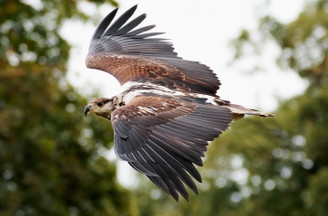Posted by Archery Country on Jul 5th 2019
What Animals are Considered Small Game?
Should you buy a small game license or a big game license? If you're new to hunting, this may be puzzling. What exactly constitutes small game as opposed to big game? And do you need separate licenses for each individual small game?
Like most things in life, the answer is: "it depends." Some states require special licenses for small game and some do not. Some require special species licenses on top of a small game license. So, let's look at what constitutes small game.

What Exactly is Considered Small Game?
Small game, by definition, are smaller animals hunted for sport or meat. These can include birds, mammals, amphibians, and reptiles. In some cases, the lines get blurred when it comes to talking about small game in certain states and countries. For example, a bird such as a grouse can be considered both small game and an upland bird or a fox might be considered both small game and a furbearer. In most cases, the special designation precludes the small game designation and you will have to purchase a license for the other license as well as a small game license, if they exist.
Big game are typically species such as antelope, bighorn sheep, mountain goat, bear, mountain lion, bison, and wolf as well as members of the deer family such as deer, elk, moose, and caribou. Other game that you can hunt typically encompasses small game. The small game animals listed are not necessarily available or legal to hunt in certain places. Contact your local Fish and Wildlife division for current hunting regulations.
Small Game Mammals
Small game mammals typically include:
- Rabbits and hares, including cottontail, jackrabbit, and snowshoe hare
- Squirrels, including gray, red, and fox squirrels
- Prairie Dogs
- Marmots, groundhogs, woodchucks
- Muskrats and beavers may be considered furbearers
- Weasels, skunks, ferrets, mink, martens, fishers, badgers, and wolverines are often considered either furbearers or predators
- Coyotes, bobcats, and lynx which are often considered furbearers or predators
- Foxes, including red, gray, and swift foxes which are often considered furbearers or predators
Small Game Birds
Small game birds typically include:
- Grouse, including sharp tailed, ruffed, blue, Franklin's, and sage grouse, are usually considered upland birds
- Doves, including mourning dove, and pigeon, squab, or rock dove, and are usually considered upland birds
- Quail, including bobwhite, California, mountain, Gambel's, and scaled quail are usually considered upland birds
- Partridge, including chukar and gray partridge, are usually considered upland birds
- Geese, including Canadian, snow, and Brant geese are considered waterfowl
- Ducks, including mallard, wood, teal, American black, canvasback, pintail, and ruddy duck are considered waterfowl
- Woodcocks and Snipe, are considered upland birds
- Turkey, which is usually considered an upland bird
- Pheasants, which are considered upland birds
- Swans, including trumpeter, tundra, black and black necked swan are considered waterfowl
- Cranes, including sandhill crane, are considered waterfowl
Amphibians and Reptiles
Small game amphibians and reptiles typically include:
- Frogs, including American toad, bullfrog, Fowler's toad, northern gray treefrog, northern cricket frog, northern spring peeper, and western chorus frog.
- Turtle, including snapping turtles.
The above are the basic small game animals available in the United States. You may find that the area you hunt may allow you to hunt different species or may prohibit hunting a particular species altogether. Always check the regulations for small game in the area you are planning to hunt.

